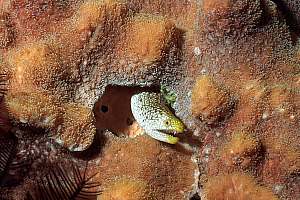 On right: f031227: Grey moray eel (Gymnothorax nubilus) |
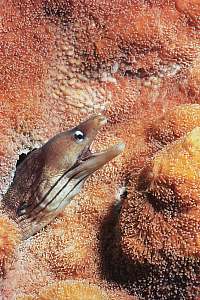 |
Due to their isolation, several species on the Kermadecs have evolved into unique forms, found only here. Living in a very small spot, surrounded by a very large infertile ocean, poses special requirements, such as:
The following overview illustrates which fishes one can recognise when diving the Kermadecs:
 On right: f031227: Grey moray eel (Gymnothorax nubilus) |
 |
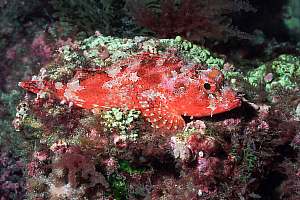 |
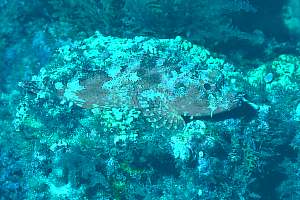 |

f030916: Toadstool grouper (Trachypoma macracanthus) and a mature Cook's scorpionfish (Scorpaena cookii) sitting side by side. The toadstool grouper actively seeks prey whereas the scorpionfish waits for prey to come near its mouth. |
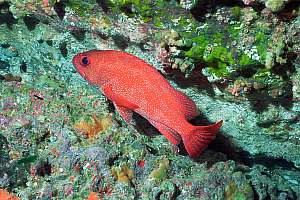
f031122: Toadstool grouper (Trachypoma macracanthus) in its sleeping den. The fish is about to change colour, like pulling its pyjamas on. |
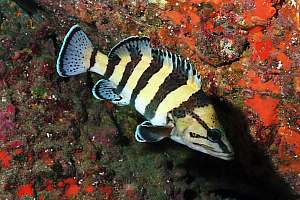
f030934: A young yellow banded perch (Acanthistius cinctus) hovers in perfect balance inside its cave. One usually finds several perches living together in the same cave. They form permanent bonds. |
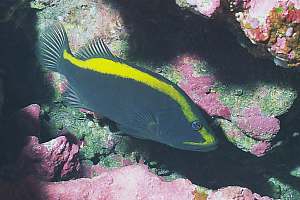
f031818: Goldribbon grouper (Aulacocephalus temmincki). These groupers have a bright yellow line running on each side of their backs. The rest of the body changes colour at will. Here it is just changing from bright blue to black. |
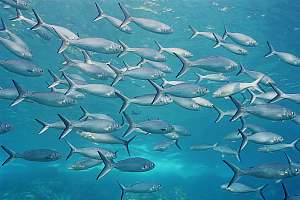 |
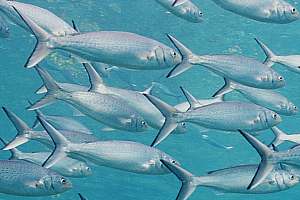 |
 |
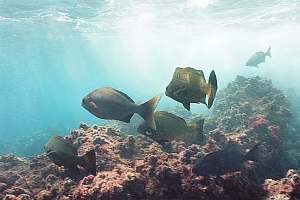 |
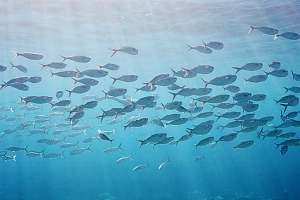 |
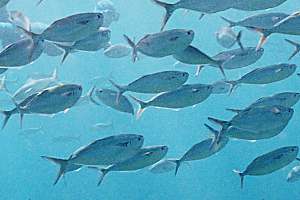 |
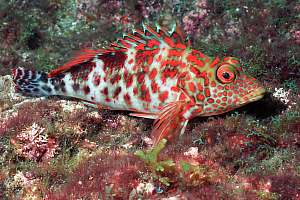 |
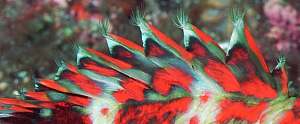 |
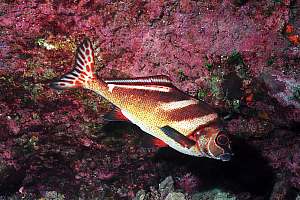 |
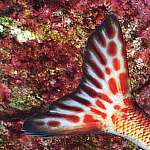 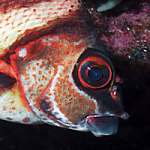 |
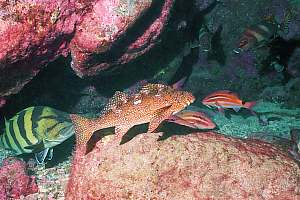 |
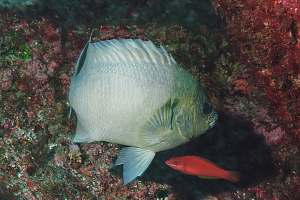 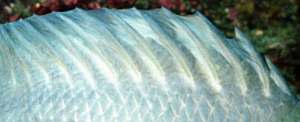 |
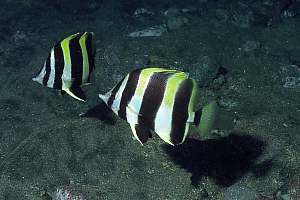 |
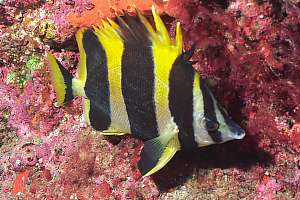 |
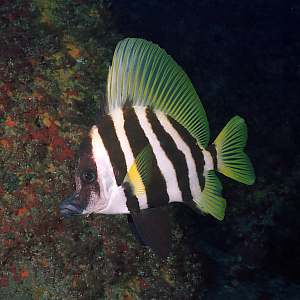 |
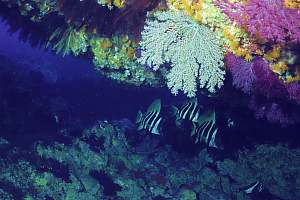 |
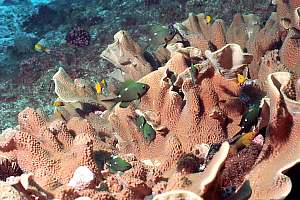 |
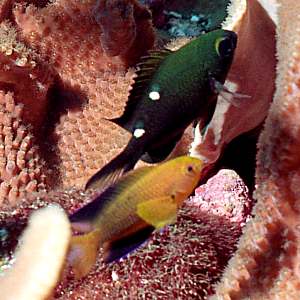 |
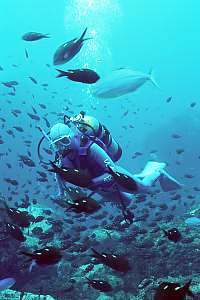 |
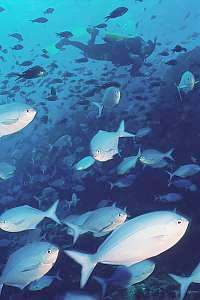 |
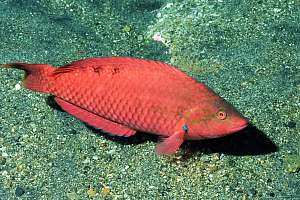 |
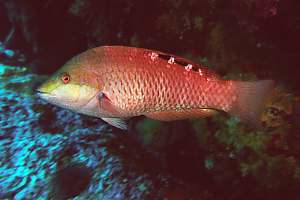 |
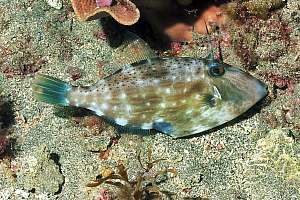 |
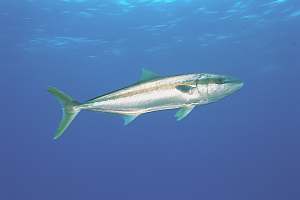 |
 |
 Both Photos: Lance Kennedy. |
| In the grey volcanic sand in between submerged boulders off Fishing
Rock, lives a little fish which may remain undetected by the spying eyes
of the scientist. It is a little sand-diver, but no longer than 4cm,
much smaller than its relative in NZ. What makes this animal undetectable
is not only its sandy colour, but more so its phenomenal speed. For instance
it makes the journey from being burrowed in the sand, to a point above
it, 4-6 times its length, and back in less than 1/25th of a second! This
is too fast for the untrained eye, and it shows as two blurred images on
a camera running 'slow motion' at 50 frames per second.
They live here in their hundreds, and with some skill they can be herded into a single confined spot of sand, no larger than two hands, temporarily hiding four dozen of them. Fifty little fish, all staring at me, while I was unable to see any of them. Regrettably, I have not been able to take photographs due to rough conditions. |